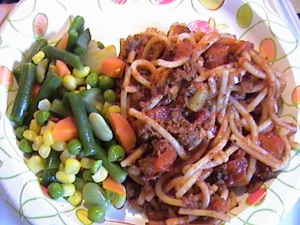Regarding the article “FREE MEAL PROGRAMS FILL BELLIES DURING SUMMER – The local 1095 Club encourages new programs to fight hunger in county” (Skagit Valley in Washington State).
Excerpt: “With families struggling to make ends meet, kids who normally receive a free breakfast and lunch at school don’t have those opportunities during the summer months, said Karen Parnell, deputy director of Skagit County Community Action Agency and a member of the new 1095 Club, named for its goal of three meals a day, every day of the year for hungry kids.”
###############################
Read Full Article – CLICK HERE
Editorial by Sue Charles © 7-2012
The summer meal program in Skagit Valley is admirable, and is very commendable!! I appreciate programs, organizations and individuals that are concerned about, and meeting the needs of children / youth / families being fed. This is important to the present and the future of the children and youth. (I’m talking about people caring enough to help others… not a government mandate that forcibly takes your money and gives to others.)
Please note, however, there are families who don’t qualify for free breakfast and lunch programs but the children go without regular meals or nourishment. These families may have working parents (family members) but their income is limited and their financial obligations such that it is difficult to buy school lunch, or sometimes to even provide nourishing breakfast (meals) at home.
Some families may have working parents and may not be hurting financially, but still the children/youth of the home get little or nothing to eat in their own homes – for whatever reason.
In fact, many children and youth go without adequate meals or nourishment for a variety of reasons beyond their control. This means they are continuously hungry and under-nourished.
Conversely, there are families who suffer joblessness and struggle to make ends meet yet they make every effort to provide nourishment for the children in the home – even if it means the adults going without certain things – perhaps skipping meals and other “necessities” so the children can eat.
(We’ve been there, done that, more than a few times.)
Point being: we can’t just lump people into categories by cultural-ethnic groups or socio-economic groups to say that children / youth from this group or that group need or don’t need consideration of adequate nourishment.
A hungry child / youth has more difficulty with concentration and learning than one who is properly nourished. Being hungry, they struggle with school and with everyday life situations. There is also the consideration of the physical impairment often caused by continuous under-nourishment. Consider, too, that a hungry or starving child or youth is more vulnerable to those who would prey on the defenseless with less than honorable intentions.
Generally speaking, people do the best they can with what they have. But, when we can, we need to go beyond thinking of ourselves and see others who need someone to care.

It is this author’s opinion that, as communities, we need to do what is in our power to make sure that children, youth, and pregnant women are able to have nourishment, and that heads of households have job opportunities. These are valuable investments to the future of those individuals and families, and to our communities and our nation.
© Sue Charles. All rights reserved.
(The author speaks from personal experience having been a malnourished child and youth; as well as having personally known, and known-of children and youth with similar situations through the years. In addition, drawing from personal experience of being a financially struggling parent, making sure the children had nourishment – even when it sometimes meant going without food and other necessities. The author and her family have spent a lifetime caring and reaching out to the needs in the community.)

Other resources:
Journey of Learning on Sue Charles.com
Native Events on Ben Charles.info
Tribal Journeys – Native Canoes of the Pacific NW







